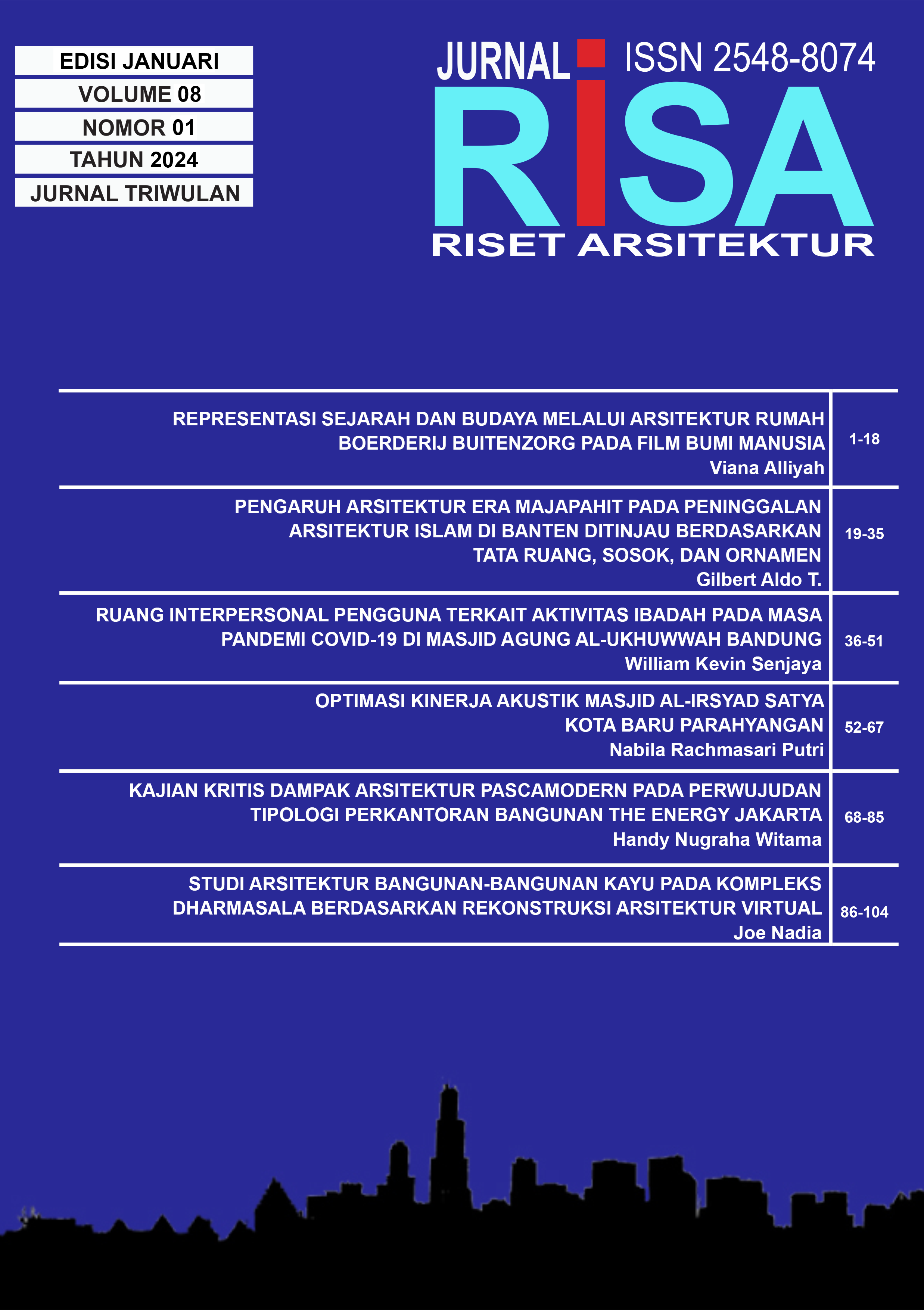ARCHITECTURAL STUDY OF WOODEN STRUCTURES IN DHARMASALA COMPLEX BASED ON VIRTUAL ARCHITECTURAL RECONSTRUCTION
DOI:
https://doi.org/10.26593/risa.v8i01.7541.86-104Abstract
Abstract - It was originally estimated that in the Dieng Plateau there were around 400 temples which brought up a theory that it was used to be an important Hindu pilgrimage site at its time. At the Dieng Temple Complex, stands Dharmasala Complex which is a wooden building complex with an area of approximately 4,500m2. In Hindu-Buddhist religious practice, dharmasala is a place for pilgrims to rest and get ready before doing the ritual in the temples. Many architectural studies on stone buildings, such as temples, have been carried out, however, buildings made of wood received less attention. This architectural study aims to provide an overview of the form of these wooden buildings and their functions. In archeology and architecture, to estimate the form of a building which parts are too separated or the remains are insufficient, virtual reconstruction techniques can be used. The result is the form of those buildings are composed of wooden structures that stand on stone pedestals, with woden plank walls, bamboo rafters, and roof coverings made of thatch. With rigid frame as the structural system and the roof forms vary between the saddle and the hip, all of them follow contextual building rules for a tropical climate which must protect its users from heat and rain. The three plots have different functions and characters. Plot 1 with the function of supporting the activities of the pilgrims that are getting ready to go to the temple, plot 2 with the function that is estimated to be classrooms and plot 3 with the function of lodging or dormitory.
Keywords: reconstruction, wooden structures, Dharmasala
Additional Files
Published
Issue
Section
License
Copyright (c) 2024 Joe Nadia

This work is licensed under a Creative Commons Attribution-NonCommercial-ShareAlike 4.0 International License.












